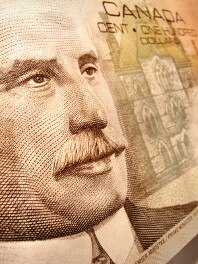The Canadian dollar dropped today following the monetary policy decision made by the Bank of Canada. The drop was short-lived, though, and the loonie has erased losses versus most of its major peers by now. The currency even gained on the US dollar, which weakened due to the outlook for interest rate cuts from the Federal Reserve.
The BoC left its main interest rate unchanged at 1.75%, as was widely expected. Unlike the Fed and the European Central Bank, Canada’s central bank does not demonstrate an easing bias. Yet some analysts considered the policy statement more dovish than was expected as it said:
Evidence has been accumulating that ongoing trade tensions are having a material effect on the global economic outlook.
The statement added further:
Recent data show the Canadian economy is returning to potential growth. However, the outlook is clouded by persistent trade tensions.
The economic forecast in the quarterly Monetary Policy Report upgraded the outlook for economic growth in 2019 from 1.2% to 1.3% but downgraded the outlook for 2020 from 2.1% to 1.9%. The outlook for 2021 remained unchanged at 2.0%. Consumer inflation is expected to dip below the central bank’s target 2% in 2019 and 2020, returning to the goal in 2021. Among risks to the inflation outlook, the couple positive ones were stronger economic growth in the United States and stronger consumption in Canada, while the rest were negative: sharp tightening of global financial conditions, rising household debt in Canada, weakness of the Canadian housing market, weaker growth in China, and falling commodity prices.
USD/CAD tumbled from 1.3126 to 1.3073 as of 17:40 GMT today. EUR/CAD traded at 1.4716 after rallying from 1.4710 to 1.4773 earlier. CAD/JPY was at about 82.93, close to its opening of 82.89, after touching the daily high of 83.15 and the daily low of 82.65.
If you have any questions, comments, or opinions regarding the Canadian Dollar, feel free to post them using the commentary form below.
